
This template was created to help plan lessons that support English Language Learners for the SPELL project.
- Subject:
- Arts and Humanities
- Mathematics
- Social Science
- Material Type:
- Lesson Plan
- Date Added:
- 09/20/2013

This template was created to help plan lessons that support English Language Learners for the SPELL project.
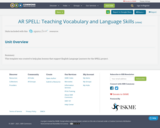
This template was created to help plan lessons that support English Language Learners for the SPELL project.
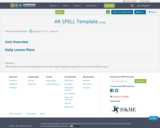
This template was created to help plan lessons that support English Language Learners for the SPELL project.

This article discusses how to use murals as an interdisciplinary, cooperative activity to blend science, art, and math concepts.
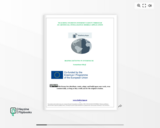
Scenariusze lekcji związanych z bezpiecznym korzystaniem z sieci internetowej.
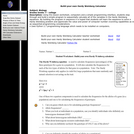
Using this lesson worksheet, computers and a simple programming interface, students step through and build a simple program to sequentially calculate all of the variables in the Hardy Weinberg equations. By building the program in sequence it is hoped that students will learn the sequence to solve a Hardy Weinberg problem and appreciate the value and power of computer number crunching capabilities as well as sequential programming considerations.
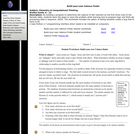
By building a program to determine the valence of ANY element on the first three rows of the Periodic table, students learn the steps to solve the problem while learning how to program logic and think about processing data in sequence. NOTE: The worksheet includes the option of letting students create a bug that they have to fix.

This module is about the foundational information of content integration. You will first read and watch videos about the general defintion of content integration. Next you will see common misconceptions and why they aren't displaying content integration alsong with the fixes you can make for those misunderstandings. Finally you will read and watch a video that are sample lesson plans that incorporate content integration. After reading this module you should have a basic understanding of content integration and an idea of how you can incorporate it into a classroom environment.
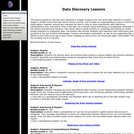
The lessons posted on this site were designed to engage students with real-world data relevant to content taught in middle school and high school science courses, and to foster an understanding of ways in which they might gather organize, analyze and interpret the data in order to draw scientifically valid inferences, interpretations and conclusions. Most of the labs use computer-based technology of spreadsheet programs or the Python programming interface. The Python lessons guide students in computational thinking to create simple programs to manipulate data. The lessons also provide students (and teachers) with instructions and guidance in the use of these technologies. Teacher and Student worksheets, as well as any supporting files, are linked to from links at the top of each lesson webpage as well as from the downloads page ("downloads" link on the scrolling menu to the left).
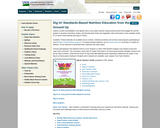
Eleven inquiry-based lessons that engage 5th and 6th graders in growing, harvesting, tasting, and learning about fruits and vegetables. The curriculum includes reproducible student handouts, 35 copies of the Dig In! At Home parent booklet (parent booklet also available separately in Spanish), and a set of 6 Dig In! posters.

Discover MyPlate is fun and inquiry-based nutrition education that fosters the development of healthy food choices and physically active lifestyles during a critical developmental and learning period for children — kindergarten.
Contains: Teacher guide, Emergent Reader Mini Books and teacher edition, Reach for the Sky song, Food Group Friends profile cards, Food cards, Look and Cook recipes, student workbook, the Five Food Groups poster, parent handouts and Discover MyPlate graphics
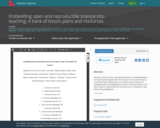
Recently, there has been a growing emphasis on embedding open and reproducible approaches into research. One essential step in accomplishing this larger goal is to embed such practices into undergraduate and postgraduate research training. However, this often requires substantial time and resources to implement. Also, while many pedagogical resources are regularly developed for this purpose, they are not often openly and actively shared with the wider community. The creation and public sharing of open educational resources is useful for educators who wish to embed open scholarship and reproducibility into their teaching and learning. In this article, we describe and openly share a bank of teaching resources and lesson plans on the broad topics of open scholarship, open science, replication, and reproducibility that can be integrated into taught courses, to support educators and instructors. These resources were created as part of the Society for the Improvement of Psychological Science (SIPS) hackathon at the 2021 Annual Conference, and we detail this collaborative process in the article. By sharing these open pedagogical resources, we aim to reduce the labour required to develop and implement open scholarship content to further the open scholarship and open educational materials movement.

Students create a spreadsheet (or use the one provided) to gather planet data and put in categories. They massage spreadsheet to tease out relationship between distance from sun and revolution speed. They use data to predict speed and/or distance for Ceres, the new dwarf planet between Mars and Jupiter.
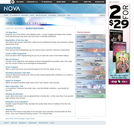
A site that has interesting information on forensics and interactive activities for kids to play. The student will learn investigative techniques that will enable them to better understand the science of forensics. The use will explore new technology related to anthropology and forensics.
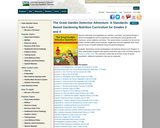
A Standards-Based Gardening Nutrition Curriculum. Eleven-lesson curriculum for 3rd and 4th grades that contains bulletin board materials, veggie dice, fruit and vegetable flash cards, and 35 copies of each of the 10 Garden Detective newsletters for parents/caregivers.
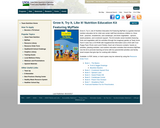
Garden-themed nutrition education kit that introduces children to six fruits and vegetables. Includes seven booklets, featuring three fruits and three vegetables, with hands-on planting activities, a CD with supplemental information, and a DVD with Cool Puppy Pup’s Picnic and Lunch Parties.
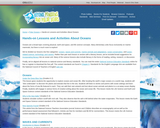
This article highlights hands-on or multimedia lesson plans about oceans. Science lessons are paired with suggested literacy lesson plans. All lessons are aligned to national standards.
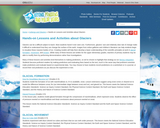
This article highlights hands-on or multimedia lesson plans about glaciers. Science lessons are paired with suggested literacy lesson plans. All lessons are aligned to national standards.
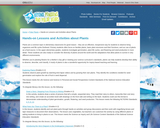
This article highlights hands-on or multimedia lesson plans about plant structures, growth and development, seed production, and dispersal. Science lessons are paired with suggested literacy lesson plans. All lessons are aligned to national standards.
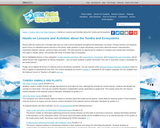
This article highlights hands-on or multimedia lesson plans about the tundra and ecosystem concepts. Science lessons are paired with suggested literacy lesson plans. All lessons are aligned to national standards.